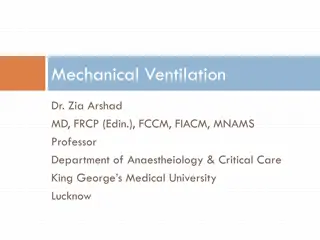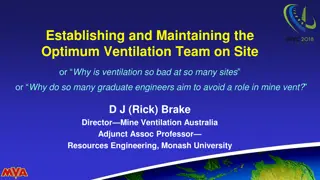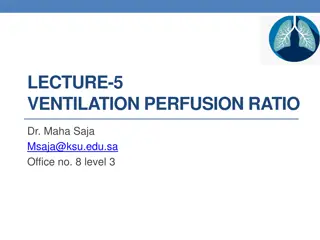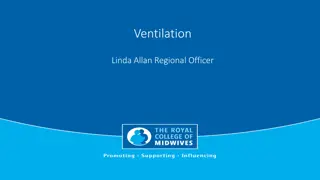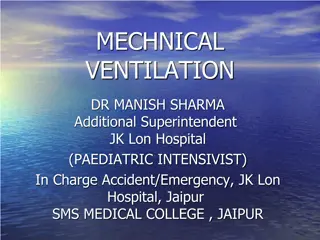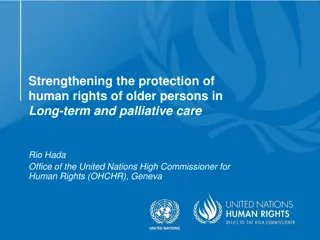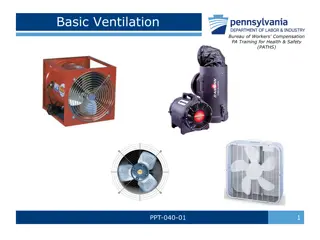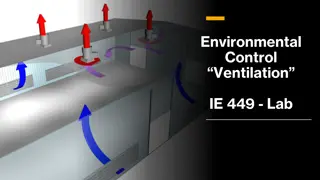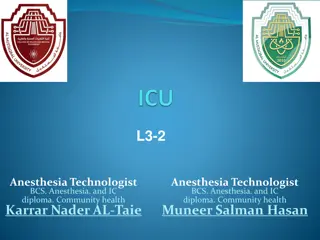Quality of Care for Children and Young People on Long-Term Ventilation
This review assesses the care provided to children and young people aged 0-25 on long-term ventilation. The study aims to identify factors for improvement in care quality for individuals receiving or having received long-term ventilation up to their 25th birthday between April 1, 2016, and March 31, 2018. Data collection methods, including surveys and interviews, were used to evaluate the overall assessment of care.
Download Presentation

Please find below an Image/Link to download the presentation.
The content on the website is provided AS IS for your information and personal use only. It may not be sold, licensed, or shared on other websites without obtaining consent from the author.If you encounter any issues during the download, it is possible that the publisher has removed the file from their server.
You are allowed to download the files provided on this website for personal or commercial use, subject to the condition that they are used lawfully. All files are the property of their respective owners.
The content on the website is provided AS IS for your information and personal use only. It may not be sold, licensed, or shared on other websites without obtaining consent from the author.
E N D
Presentation Transcript
Definition - It is the volume of the respiratory tract that does not participate in gas exchange. It is approximately 300 ml in normal lungs. It is important to distinguish between the anatomic dead space (respiratory system volume exclusive of alveoli) and the total (physiologic) dead space (volume of gas not equilibrating with blood; ie, wasted ventilation). . Normally, the volume (in mL) of this anatomic dead space is approximately equal to the body weight in pounds. As an example, in a man who weighs 150 lb (68 kg), only the first 350 mL of the 500 mL inspired with each breath at rest mixes with the air in the alveoli. Conversely, with each expiration, the first 150 mL expired is gas that occupied the dead space, and only the last 350 mL is gas from the alveoli. The anatomic dead space can be measured by analysis of the single-breath N2curves
Alveolar ventilation (VA) is the volume of air reached the alveoli in per minute that (1) reaches the alveoli and (2) takes part in gas exchange. Alveolar ventilation is often misunderstood as representing only the volume of air that reaches the alveoli. Physiologically, VA is the volume of alveolar air/minute that takes part in gas exchange (transfer of oxygen and carbon dioxide) with the pulmonary capillaries. Air that reaches the alveoli, but for one reason or other does not take part in gas exchange, is not considered part of VA (for example, air that goes to an unperfused alveolus). Such alveolar region, rapid shallow breathing produces much less alveolar ventilation than slow deep breathing at the same respiratory minute volume( the amount of air moved in or out of the lungs per minute ). Regions lacking gas exchange constitute alveolar dead space. Factors influencing alveolar dead space Low cardiac output can increase alveolar dead space (increasing West's zone 1) Pulmonary embolism 10/min 30/min Respiratory rate 600 mL 200 mL Tidal volume 6 L 6 L Minute volume (600 150) x 10 = 4500 mL (200 150) x 30 = 1500 mL Alveolar ventilation
Measurement of anatomical dead space By using Fowler's method. Fowler's method Based on rapid dilution of gas already in lung (N2 or CO2) by inspired gas (100% O2). Is the single-breath technique developed by Fowler in 1948. In this method, after an inhalation of oxygen, the nitrogen concentration in an individual s exhalation is plotted against exhaled volume. Single breath of 100% O2 During the following expiration, [N2] increases from 0% (pure dead space gas) to equilibrium (pure alveolar gas) (i.e. plateau) => as per [N2] vs time graph Using [N2] vs expired volume graph, anatomical dead space is taken to be at the mid-point of the transition from conducting zone to gas exchange zone.
Size of subject => increases with body size Age => at infancy, anatomical dead space is higher for body weight (3.3mL/kg) Posture => sitting 147mL, supine 101mL Position of neck and jaw Lung volume at the end of inspiration => anatomical dead space increases by 20mL for each L of lung volume Drugs e.g. bronchodilator will increase dead space



